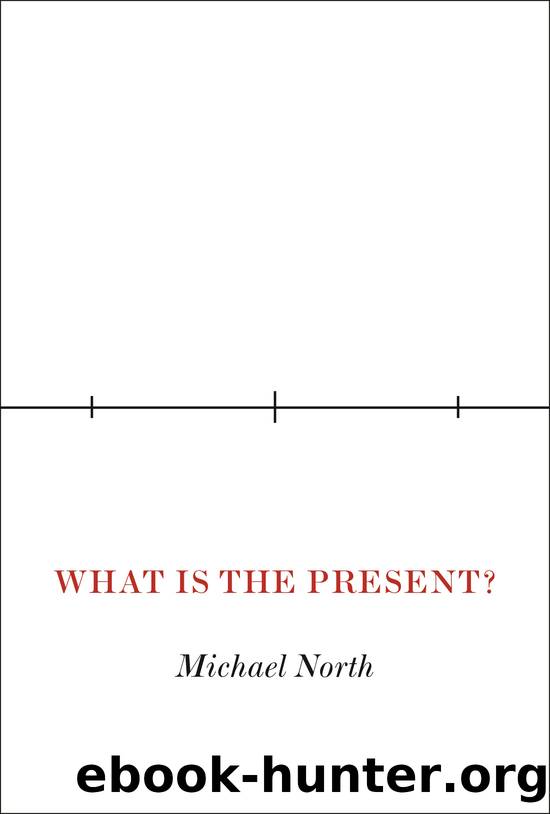What Is the Present? by North Michael;

Author:North, Michael;
Language: eng
Format: epub
ISBN: 5344271
Publisher: Princeton University Press
5
Narrative and the
“Unexplained Instant”
I
Toward the beginning of Elizabeth Bowen’s wartime novel The Heat of the Day, the unreflective nature of the rather strangely named character Louie Lewis is described in this way: “Her object was to feel that she, Louie, was, and in the main she did not look back too willingly at what might have been said or done by her in pursuit of that.”1 Louie, in other words, lives in the present, but the simplicity of her devotion to the here and now is qualified considerably by the complexity of Bowen’s account of it. Some of this convolution is due to Bowen’s insistence on a prose style as twisted and indirect as the motives of her characters, but some of it is endemic to narrative fiction. For the most striking oddity of the passage is certainly the way it calls upon the past tense in order to assert Louie’s existence in the present. According to settled stylistic convention, narration of a character’s thoughts shifts the verb tense into the past, so that Louie’s simple and immediate desire to affirm that “I am” appears in a very different form as the statement that “she, Louie, was.” Anyone reading this novel will accept the conversion without even needing to understand it, and yet the italics applied to the second was in the sentence trip the eye and awake a skeptical attention. A clash between the existential and the narrative present appears, and what is meant to affirm Louie’s life in the present sounds as though it were consigning her to the literal past.
The peculiarly convoluted present that appears in this instance is not just endemic to narrative but definitive of it. The speaker in a lyric poem or a character in a play is free to announce her existence in the present tense, and if Louie had been allowed by her creator to speak at this point, she too would have said, “I am.” Because her thoughts are narrated and not transcribed, however, she must, by convention, slip into the past tense. Traditionally, the present tense itself appears in narration only in relatively specialized cases, almost all of them involving first-person narrators. Even there, its use is complicated by the practical fact that it is difficult “to record instant happenings at the instant they happen.”2 Even in such cases as Samuel Richardson’s “writing to the minute,” the gap between experience and record cannot literally disappear, a fact that parodies such as Fielding’s Shamela made much of. In this case, convention seems to respect a basic fact of human life, that having an experience and recording it must be temporally distinct. Even those, like Louie, who live in the present, must narrate that fact in the past tense.
A similar example from Willa Cather’s The Professor’s House illustrates another aspect of this traditional practice. When Cather’s protagonist, elderly professor Godfrey St. Peter, willingly faces the prospect of death late in the novel, he decides, “It was the truth.”3 Here, the underlying statement, what St.
Download
This site does not store any files on its server. We only index and link to content provided by other sites. Please contact the content providers to delete copyright contents if any and email us, we'll remove relevant links or contents immediately.
| Books & Reading | Comparative Literature |
| Criticism & Theory | Genres & Styles |
| Movements & Periods | Reference |
| Regional & Cultural | Women Authors |
4 3 2 1: A Novel by Paul Auster(11063)
The handmaid's tale by Margaret Atwood(6863)
Giovanni's Room by James Baldwin(5888)
Big Magic: Creative Living Beyond Fear by Elizabeth Gilbert(4730)
Asking the Right Questions: A Guide to Critical Thinking by M. Neil Browne & Stuart M. Keeley(4585)
On Writing A Memoir of the Craft by Stephen King(4219)
Ego Is the Enemy by Ryan Holiday(3999)
Ken Follett - World without end by Ken Follett(3979)
The Body: A Guide for Occupants by Bill Bryson(3808)
Bluets by Maggie Nelson(3718)
Adulting by Kelly Williams Brown(3676)
Guilty Pleasures by Laurell K Hamilton(3589)
Eat That Frog! by Brian Tracy(3521)
White Noise - A Novel by Don DeLillo(3438)
The Poetry of Pablo Neruda by Pablo Neruda(3370)
Alive: The Story of the Andes Survivors by Piers Paul Read(3316)
The Bookshop by Penelope Fitzgerald(3234)
The Book of Joy by Dalai Lama(3222)
Fingerprints of the Gods by Graham Hancock(3218)
